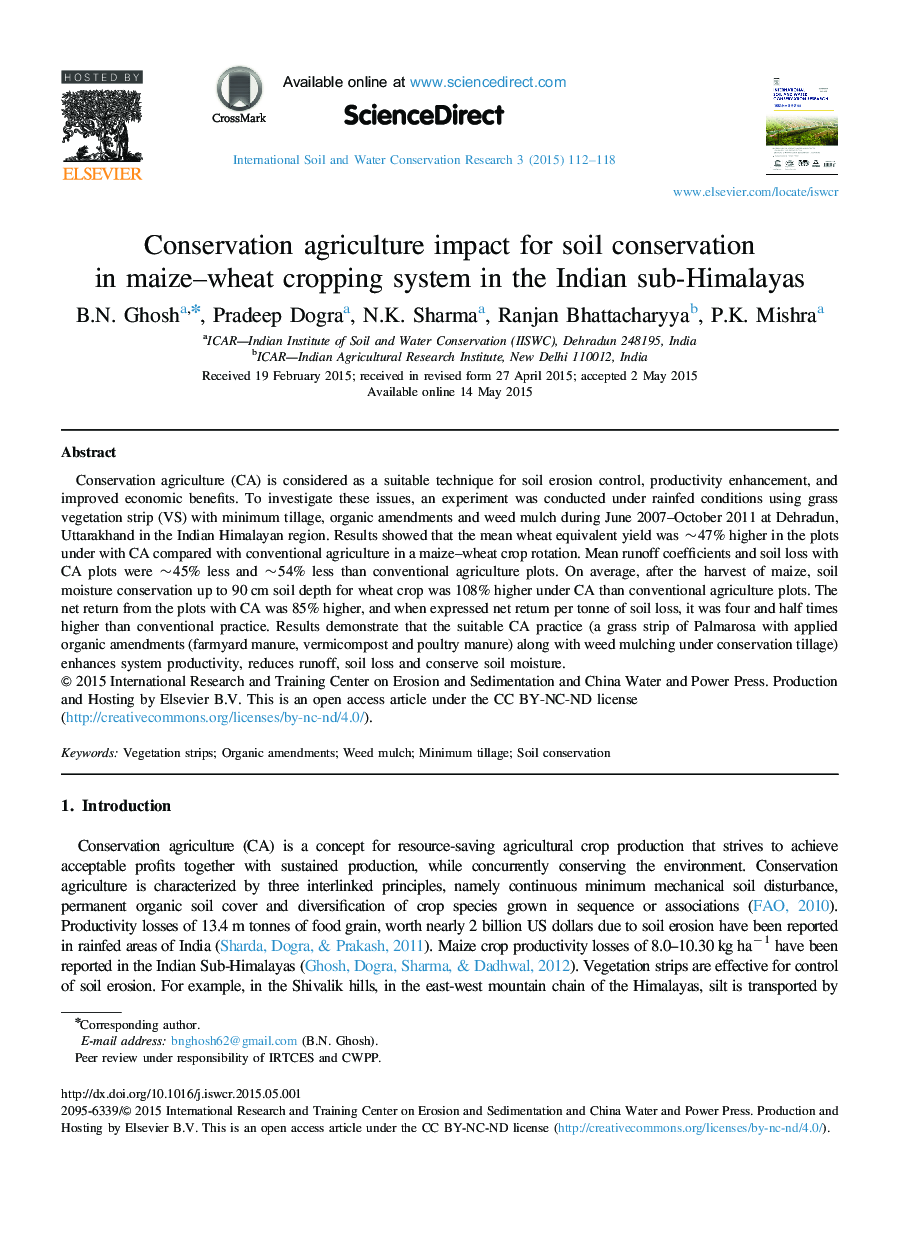| کد مقاله | کد نشریه | سال انتشار | مقاله انگلیسی | نسخه تمام متن |
|---|---|---|---|---|
| 4452132 | 1312026 | 2015 | 7 صفحه PDF | دانلود رایگان |
Conservation agriculture (CA) is considered as a suitable technique for soil erosion control, productivity enhancement, and improved economic benefits. To investigate these issues, an experiment was conducted under rainfed conditions using grass vegetation strip (VS) with minimum tillage, organic amendments and weed mulch during June 2007–October 2011 at Dehradun, Uttarakhand in the Indian Himalayan region. Results showed that the mean wheat equivalent yield was ~47% higher in the plots under with CA compared with conventional agriculture in a maize–wheat crop rotation. Mean runoff coefficients and soil loss with CA plots were ~45% less and ~54% less than conventional agriculture plots. On average, after the harvest of maize, soil moisture conservation up to 90 cm soil depth for wheat crop was 108% higher under CA than conventional agriculture plots. The net return from the plots with CA was 85% higher, and when expressed net return per tonne of soil loss, it was four and half times higher than conventional practice. Results demonstrate that the suitable CA practice (a grass strip of Palmarosa with applied organic amendments (farmyard manure, vermicompost and poultry manure) along with weed mulching under conservation tillage) enhances system productivity, reduces runoff, soil loss and conserve soil moisture.
Journal: International Soil and Water Conservation Research - Volume 3, Issue 2, June 2015, Pages 112–118
